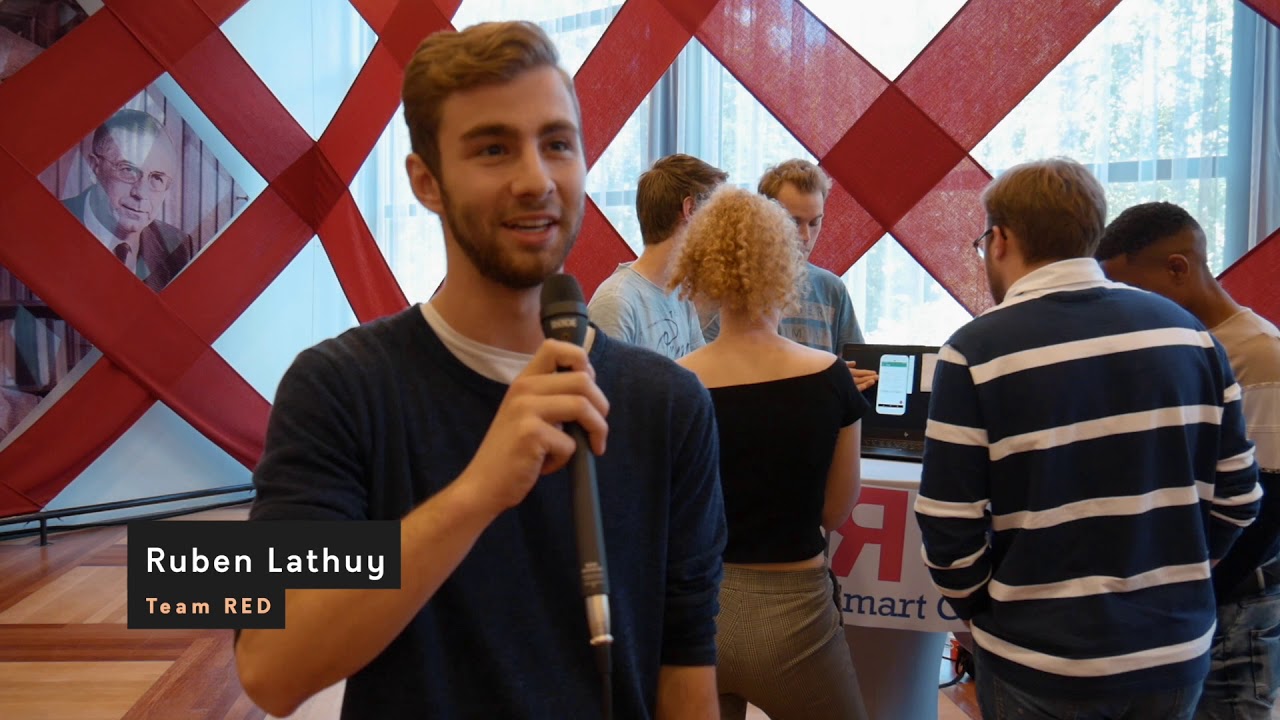Ethics via challenge based learning at TU/e
TU Eindhoven has fundamentally redesigned its basic course on ethics with help of the flipped-classroom concept and challenge-based learning to increase students’ motivation. A group of 180 students participated in a pilot, which was led by Gunter Bombaerts. Inspiration was taken from Nottingham Trent’s SCALE-UP. Key to challenge-based learning are of course the external parties that bring in their real-life case-studies. Pilot results show that intrinsic motivation, autonomy and competence with students are significantly higher in the co-creation case compared to the other approach not using challenge-based learning. The external stakeholders were also enthusiastic about the approach.
Lessons learned
Challenge-based
It is very important to define the challenge as precisely as possible. This is the case for technical challenges, but more so for ethics challenges. Clients need guidance how to formulate their problem in such a way that students can start working on the ethical issues.
Process evaluation
Students came up with creative solutions. Nevertheless, it will be a next version’s challenge to make students’ work more ‘technical’. Too often, they shifted to ‘communication’ issues as the main (or only) ethical issues. An extra result is that students were so motivated that they asked to discuss other philosophers than the ones that were discussed in class (which was, of course, further stimulated!).
Stakeholders liked the approach and expressed that the time they spend on it was worth the effort. Key here was that in every meeting with the client the question “How can we do something for you?” was central. Involved PhD students felt very autonomous and responsible and could link the cases immediately to their research.
Scaling-up
The challenge-based learning was scaled-up to 180 students. It is as intensive as a ‘normal’ project course and PhD’s can coach one group of 60 students for the entire course period on their own. It could in principle be scalable to the larger group of 2000 students.
External partners
External partners (called clients in this course) are central in challenge-based learning. They provide the open-ended exercise the students are faced with. Here (some) examples of the ethical challenges of 6 clients that participated:
- Jouw Licht op 040: is a public procurement-based project consisting of the municipality of Eindhoven, Heijmans and Signify, and the Eindhoven University of Technology’s Lighthouse. How can JLO040 design a neighbourhood Eindhoven is “prettier, safer, and more interesting” through lighting?
- TU/e's Student team CASA: designs “comfortable, affordable, sustainable, and alternative” living accommodation. How can CASA use sensors in such a way that it respects privacy and ensures security? What design principles would students recommend CASA to build a better “smart” house?
- WijZijnIn architecture – Brainport District: In 2016, TU/e and the municipality of Helmond decided that they would build the “smartest neighborhood in the world”. How should BSD select the future inhabitants of the houses? How can the technologies be optimized to answer future inhabitants’ values?”
- TU/e’s Student team RED: develops a smart innovation guiding platform on which users can run simulations to demonstrate the impact that different technologies have on the grid, and work to optimize the system or compare different alternatives. How should Team Red organize the process for people on TU/e campus to voice their opinion and for the feedback to be addressed sufficiently?
- Community Based Virtual Power Plant Loenen: is a software-based solution that aggregates distributed energy resources into one coordinated portfolio. How can citizens in a community share their energy mutually, distribute the revenue fairly, fight poverty and reach all people (also young people) in the community with co-creation?
- TU/e’s Student team SOLID: realized the proof of concept how iron powder can be a viable source of energy. SOLID is now working towards developing the metal cycle process further. How can the team make its technology and process a commercial success, contribute to sustainability goals and have strict guidelines on working conditions for iron suppliers in Brazil and elsewhere in the world?
More information
For more information on this project, please contact Gunter Bombaerts g.bombaerts@tue.nl, visit the 4TU.CEE Innovation Map or watch the video.
This pilot was part of the H2020 project SCALINGS on scaling of co-creation.




